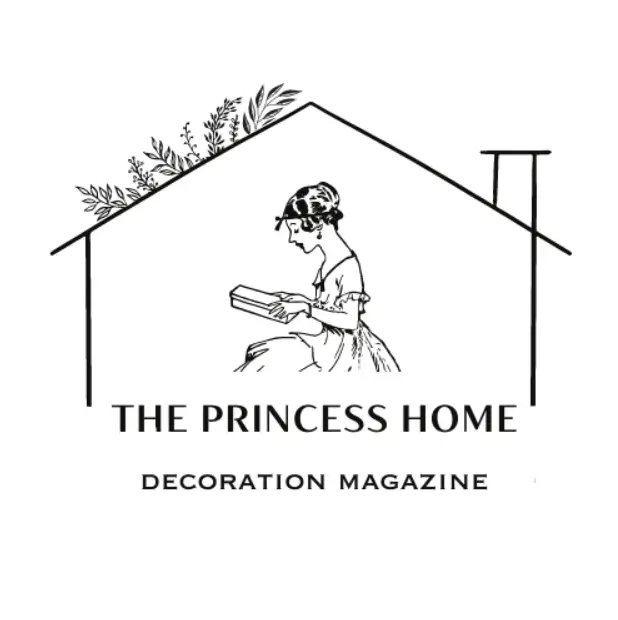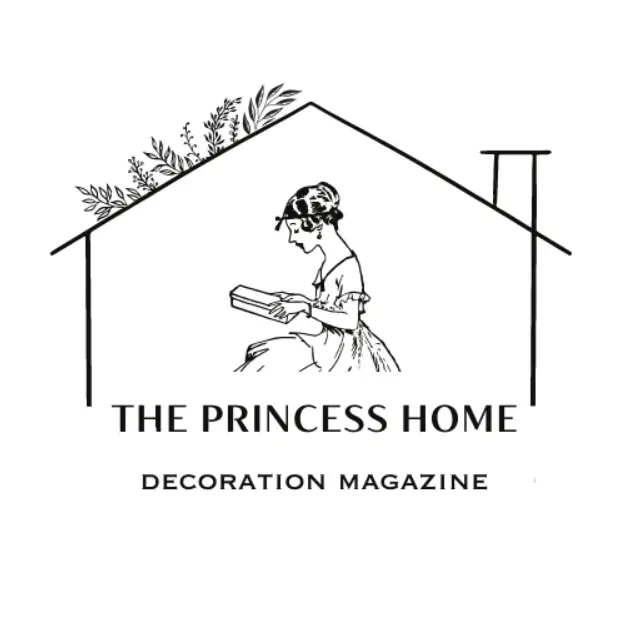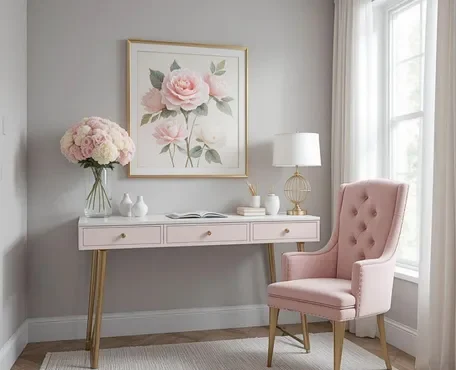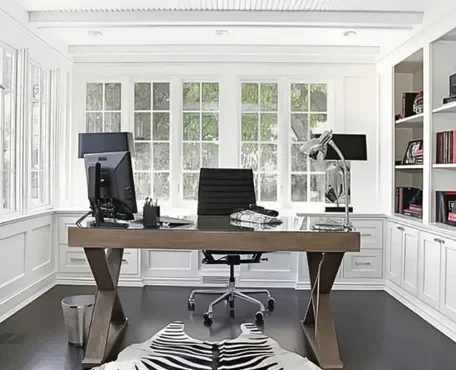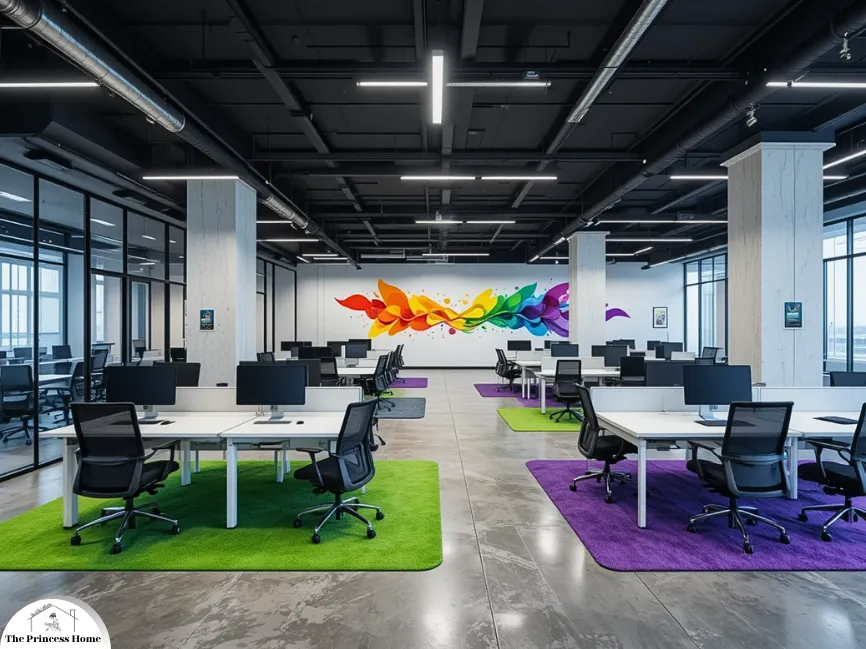
Make Your Small office interior design a Productive & Stylish
In the contemporary professional landscape, the design of office spaces holds significant importance. As businesses strive for enhanced productivity, employee well-being, and a competitive edge, the interior design of a small office has emerged as a crucial factor. This essay delves into the intricate world of small office interior design, exploring the key elements, principles, and considerations that contribute to creating an effective, efficient, and aesthetically pleasing workspace.
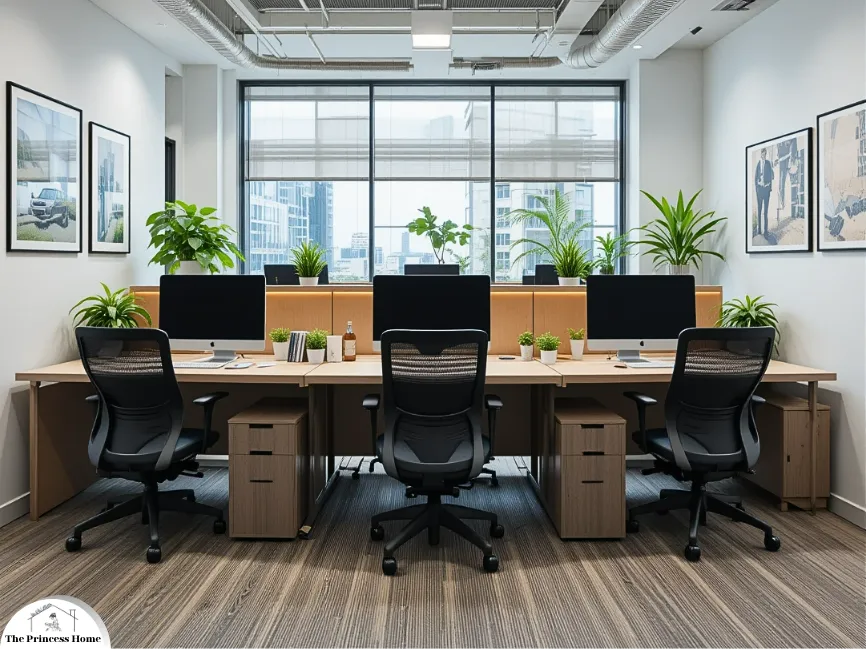
I. Understanding the Importance
The design of a small office space plays a crucial role in shaping productivity, employee well-being, and the impression the company makes on visitors. A well-planned layout can enhance communication, collaboration, and task efficiency, directly boosting productivity. At the same time, incorporating elements such as natural light, ergonomic furniture, and proper ventilation supports the physical and mental well-being of employees, fostering a healthier work environment. Additionally, a visually appealing and organized office creates a strong first impression on clients, partners, and visitors, reflecting professionalism and reinforcing the company’s credibility.
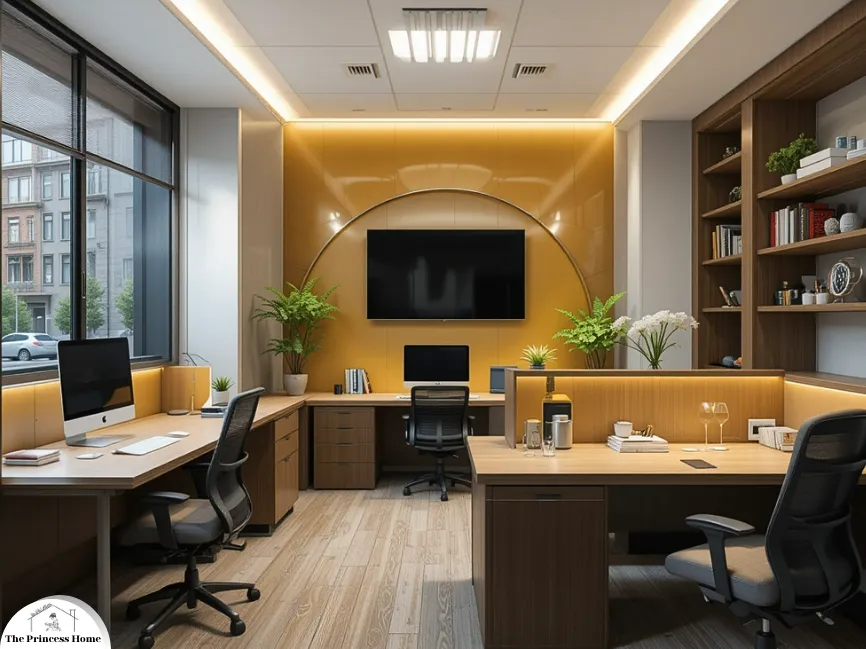
2. Key Elements of Small Office
Designing a small office requires smart space planning to maximize functionality and flow. Dividing areas into zones helps organize tasks and boost efficiency. Thoughtful color schemes and balanced lighting enhance mood and energy. Ergonomic, flexible furniture supports comfort and adaptability. Efficient storage, like vertical and hidden options, keeps the space tidy. Together, these elements create a productive, welcoming, and professional environment.
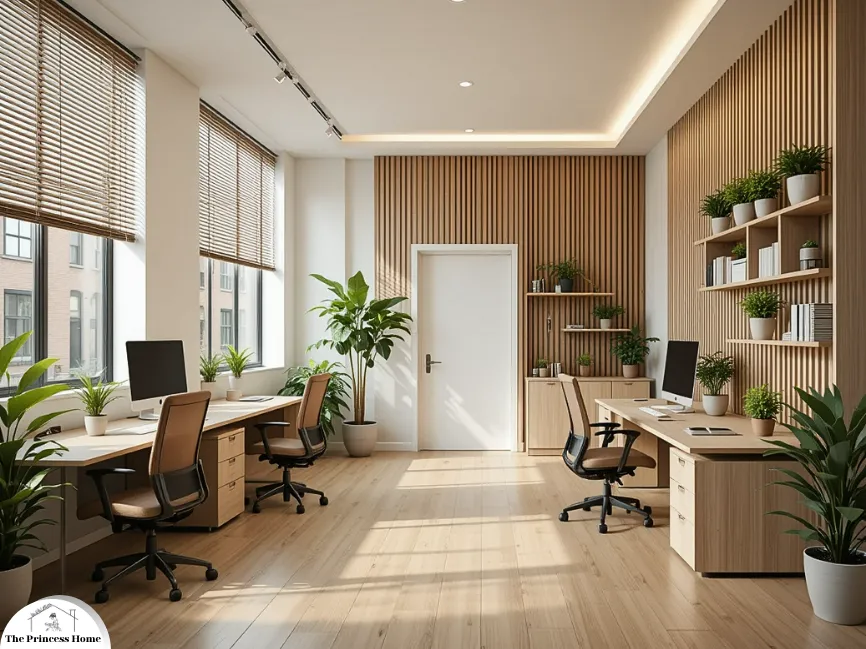
3. Principles of Small Office
A thoughtfully designed small office embraces minimalism, where less is more. This approach prevents overcrowding and promotes a clean, focused environment. Simple aesthetics, using a restrained color palette and streamlined furnishings, contribute to a calm and professional look. Maintaining balance and symmetry creates visual harmony. Well-balanced layouts and symmetrical arrangements ensure the space feels orderly and cohesive, avoiding visual clutter.
Functionality and flow are also essential. Designing the layout around natural workflow patterns enhances efficiency, while keeping pathways clear ensures smooth, unobstructed movement throughout the space. Together, these principles support a workspace that is both practical and visually appealing.
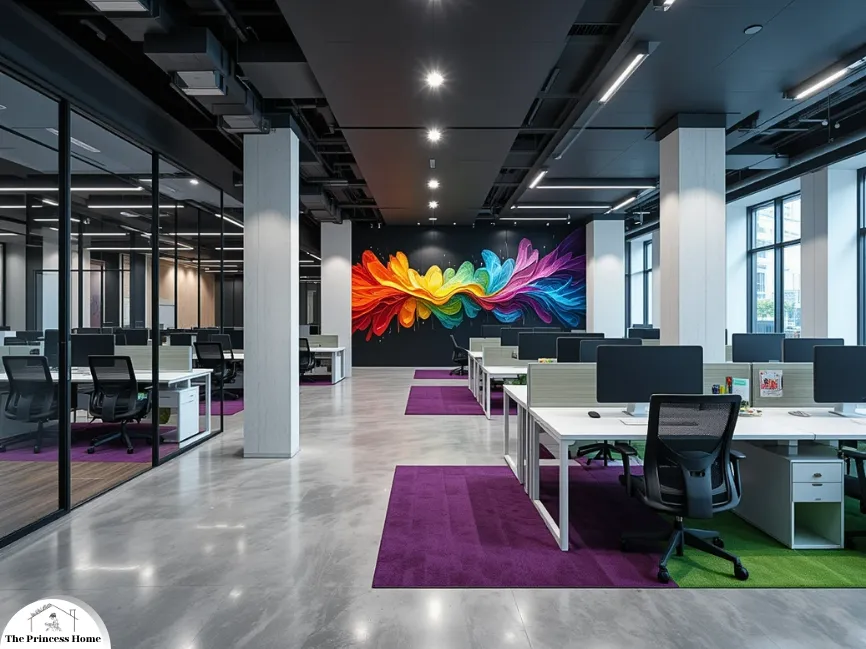
4. Considerations in Small Office
An effective small office design should reflect the company’s branding and identity, ensuring consistency with its image and values. Personal touches that showcase company culture add character and make the space uniquely theirs. Acoustics and privacy are also key in maintaining a functional environment. Using sound-absorbing materials and providing quiet zones or meeting rooms helps manage noise and supports both focus and confidentiality.
Lastly, technological integration is essential. Seamless wiring, accessible outlets, and cable management support modern devices, while collaboration tools like video conferencing tech enhance team connectivity and communication.
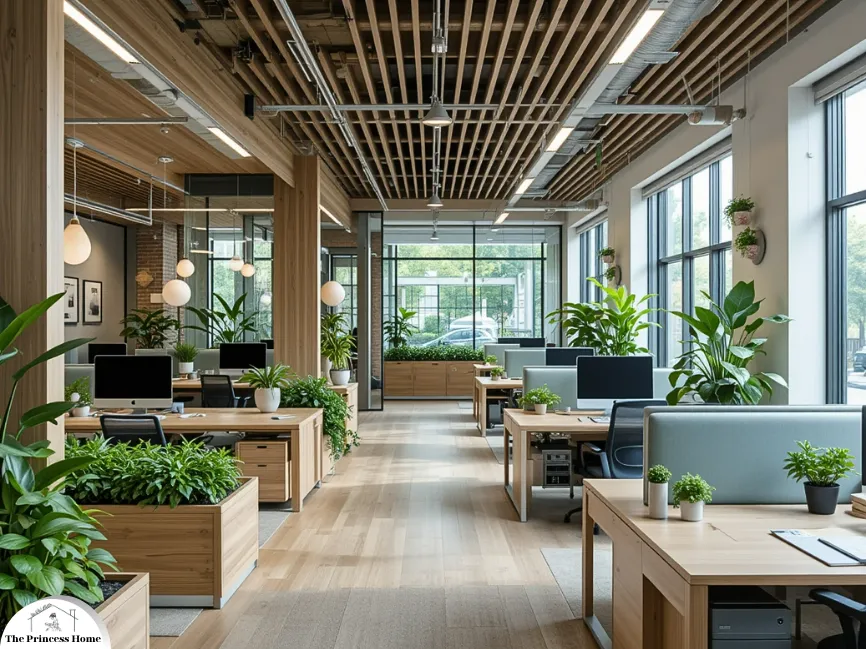
5. Trends and Innovations
Modern small office design emphasizes biophilic elements, integrating nature through plants, natural materials, and water features to enhance well-being and reduce stress. This approach also supports better air quality, creativity, and cognitive function. Flexibility and adaptability are key, with agile layouts that support various work styles—from quiet zones to collaborative spaces.
Hot desking further encourages team interaction and maximizes space efficiency. Sustainability is also a priority, with eco-friendly materials like recycled wood and low-VOC paints promoting health and environmental responsibility. Energy-efficient solutions—such as smart lighting and appliances—help cut costs and reduce the office’s carbon footprint.
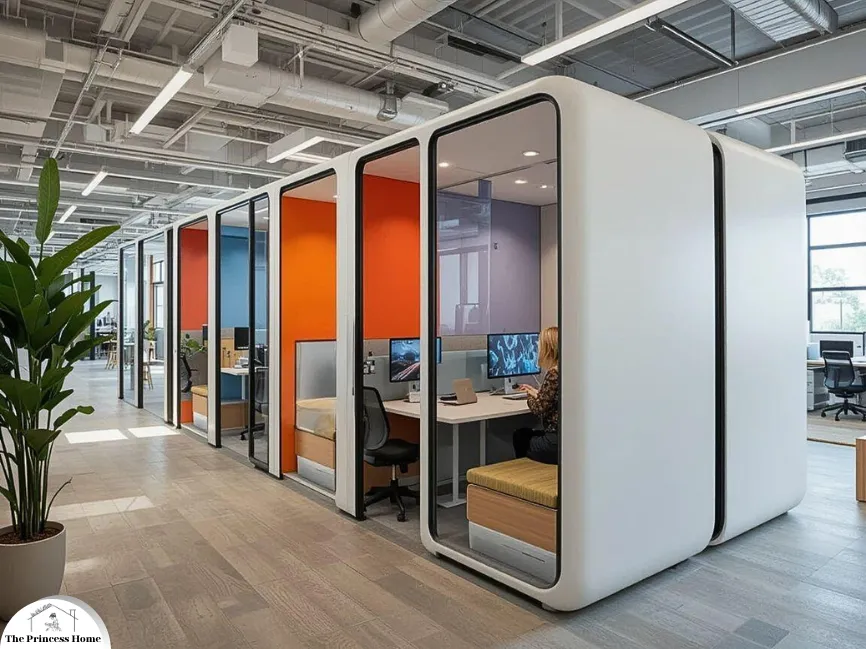
6. Successful Small Office
Examples of innovative small office design include Google’s workspace pods, which blend privacy and openness. These modular pods allow focused work while still encouraging spontaneous collaboration within open-plan environments. Etsy’s sustainable office in Brooklyn demonstrates how reclaimed materials and vintage furniture can create a unique, eco-friendly workspace. Biophilic features like a living wall and natural elements foster a calming, nature-connected atmosphere, even in a bustling city setting.
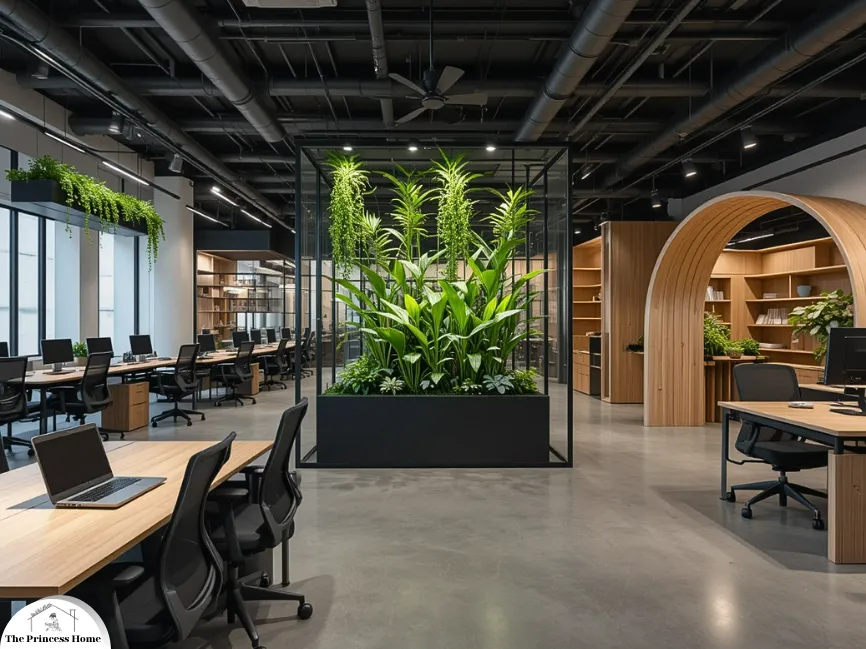
7. Overcoming Challenges
Designing a small office often comes with limited space, requiring smart solutions like foldable furniture, under-desk storage, and wall-mounted shelves to maximize every inch. Multi-functional furniture further optimizes space by serving dual purposes. Budget constraints are another common challenge. Prioritizing essential design elements ensures the best use of available funds, while choosing cost-effective, durable materials helps maintain both quality and visual appeal without overspending.
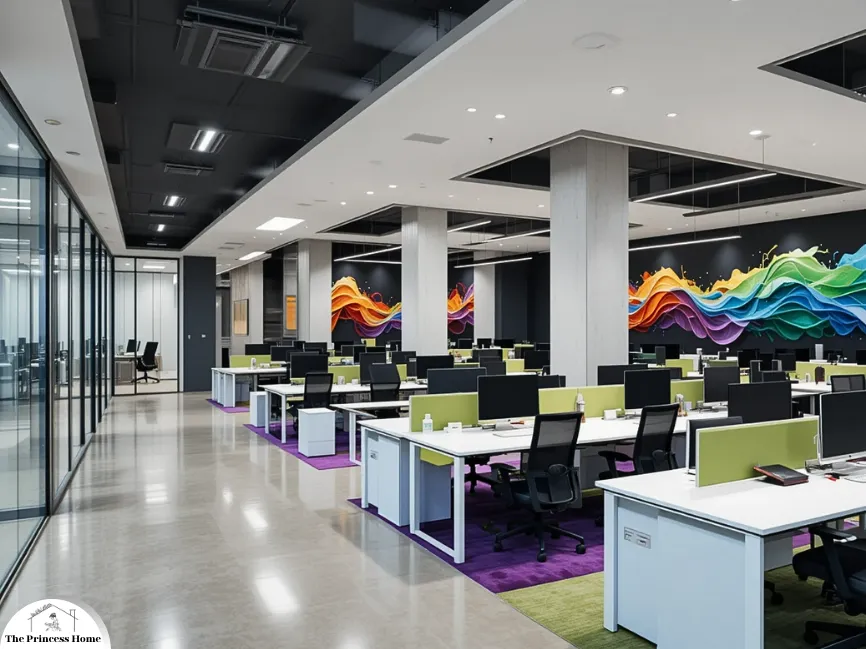
8. Future Outlook
Future small office designs will embrace hybrid work environments, supporting flexible work models that blend in-person collaboration with virtual connectivity. Spaces will integrate home-office elements to accommodate remote work seamlessly. Well-being-centric designs will gain importance, focusing on mental health with dedicated meditation and relaxation zones, as well as improved acoustics. Additionally, technology that monitors air quality and encourages healthy behaviors will help create a healthier workplace.
Conclusion
The realm of small office interior design is a captivating fusion of creativity, functionality, and innovation. By embracing emerging trends, staying attuned to employee needs, and adapting to the evolving work landscape, small office interior design will continue to shape the way we work, collaborate, and thrive. As businesses continue to understand the profound impact of their office environments, the art of small office interior design will remain a dynamic and essential component of organizational success.
Here are some frequently asked questions related to the article :
Q1: What is the significance of small office interior design?
A1: Small office interior design holds immense importance as it directly influences productivity, employee well-being, and the overall image of a company. A well-designed office space can optimize workflow, enhance creativity, and leave a positive impression on clients and visitors.
Q2: How does interior design impact employee productivity?
A2: Interior design affects productivity by creating a conducive environment for focused work and collaboration. Thoughtful space planning, comfortable furniture, proper lighting, and noise control contribute to reduced stress and improved concentration among employees.
Q3: What role does color play in small office interior design?
A3: Color influences the mood and ambiance of a workspace. Neutral colors promote a calm and professional atmosphere, while pops of vibrant hues can stimulate creativity. Choosing the right color palette can impact the overall energy of the office.
Q4: How can a small office maximize its limited space?
A4: Maximizing limited space involves efficient space planning, modular furniture, and vertical storage solutions. Creating functional zones and avoiding clutter help create an organized and spacious feel even in a small area.
Q5: What is biophilic design, and why is it relevant for small offices?
A5: Biophilic design incorporates natural elements into the workspace, such as plants and natural materials. This design approach improves employee well-being, reduces stress, and enhances air quality—factors crucial for maintaining a positive work environment in small offices.
Q6: How can a small office balance open spaces and privacy needs?
A6: Achieving a balance between open spaces and privacy involves incorporating soundproof meeting rooms, phone booths, and flexible furniture arrangements. These elements allow employees to collaborate while also having spaces for focused work and private conversations.
Q7: What are some cost-effective small office interior design strategies?
A7: Cost-effective strategies include repurposing existing furniture, using affordable yet durable materials, and prioritizing essential design elements that align with the company’s goals. Smart space utilization and creative storage solutions can also help manage costs.
Q8: What does the future hold for small office interior design?
A8: The future of small office interior design involves accommodating hybrid work models, incorporating well-being-focused designs, and integrating technology for seamless collaboration. The blend of in-person and remote work will shape the layout and functionality of office spaces.
Q9: How can technology be integrated into small office interior design?
A9: Integrating technology involves providing accessible outlets, optimizing Wi-Fi connectivity, and incorporating collaboration tools for virtual meetings. Smart lighting systems and environmental monitoring tech can also contribute to a tech-enhanced workspace.
Q10: What are some examples of successful small office interior design implementations?
A10: Examples include Google’s modular workspace pods that balance open and private spaces, and Etsy’s sustainable office that incorporates recycled materials and biophilic elements. These cases showcase innovative approaches to small office design.
